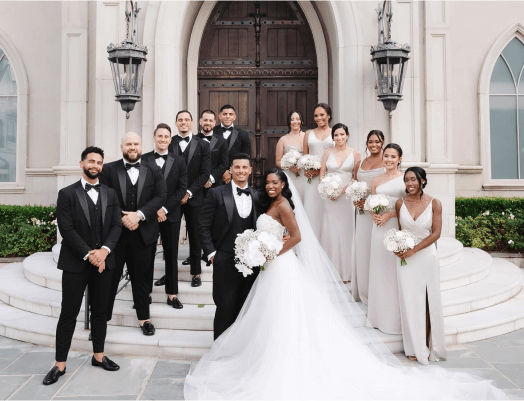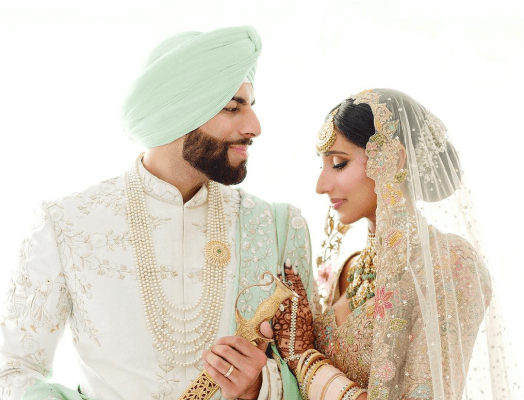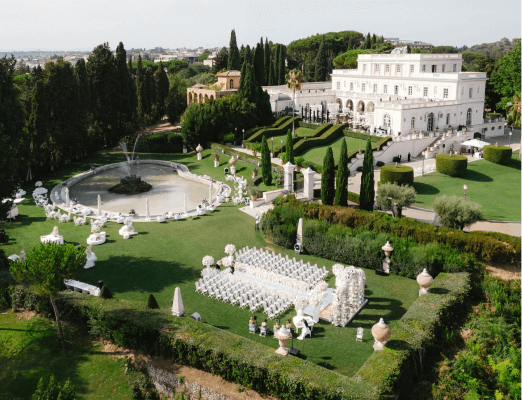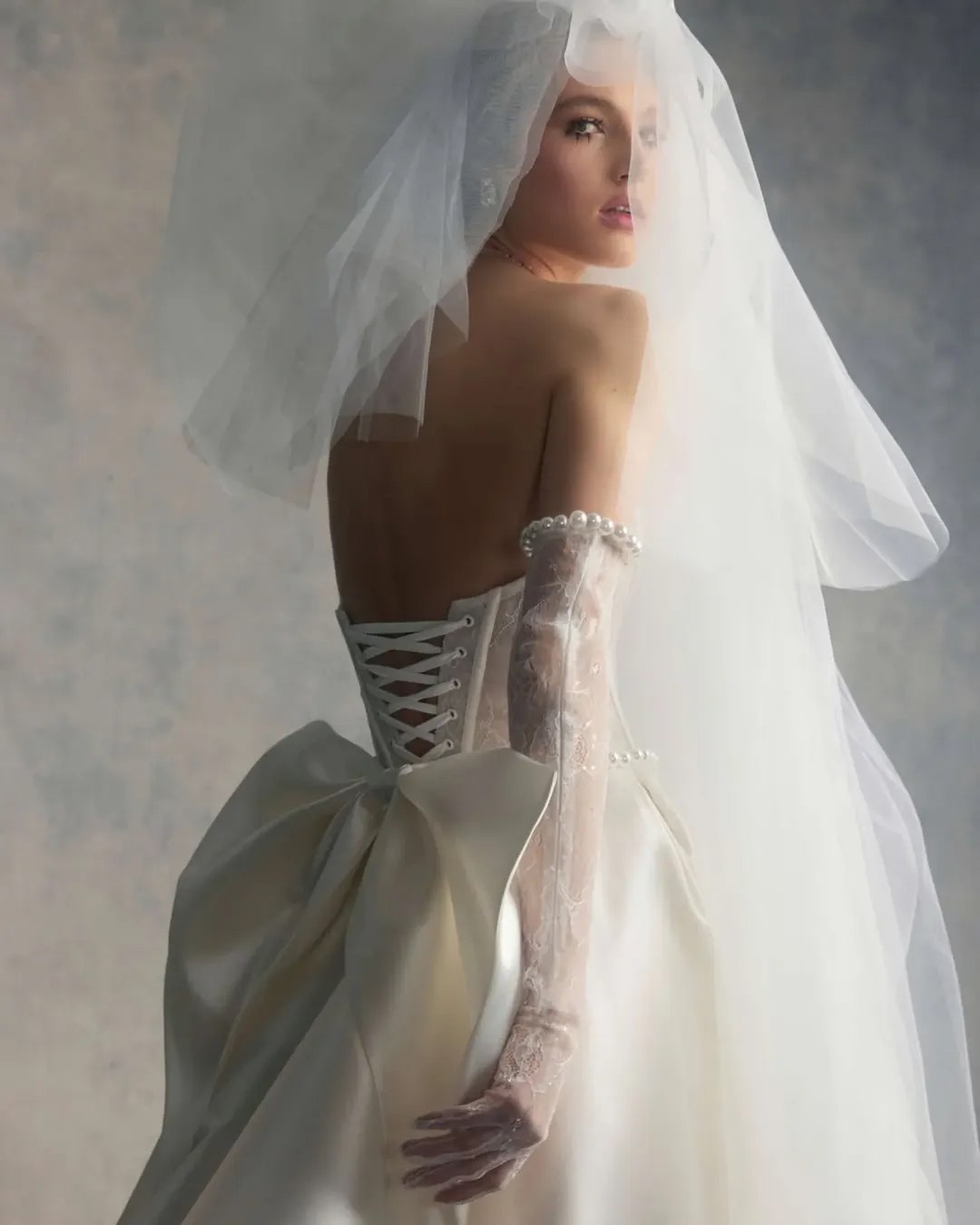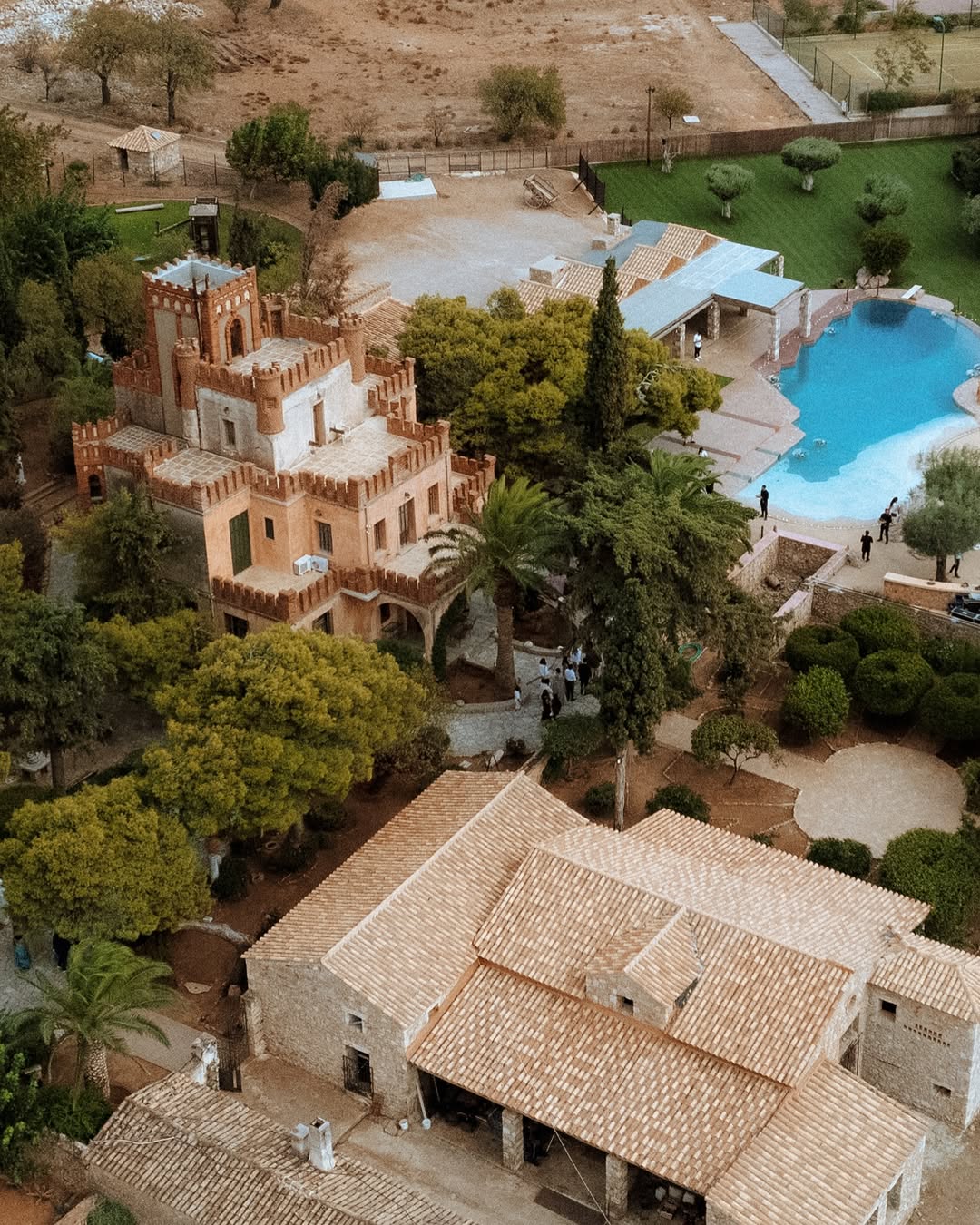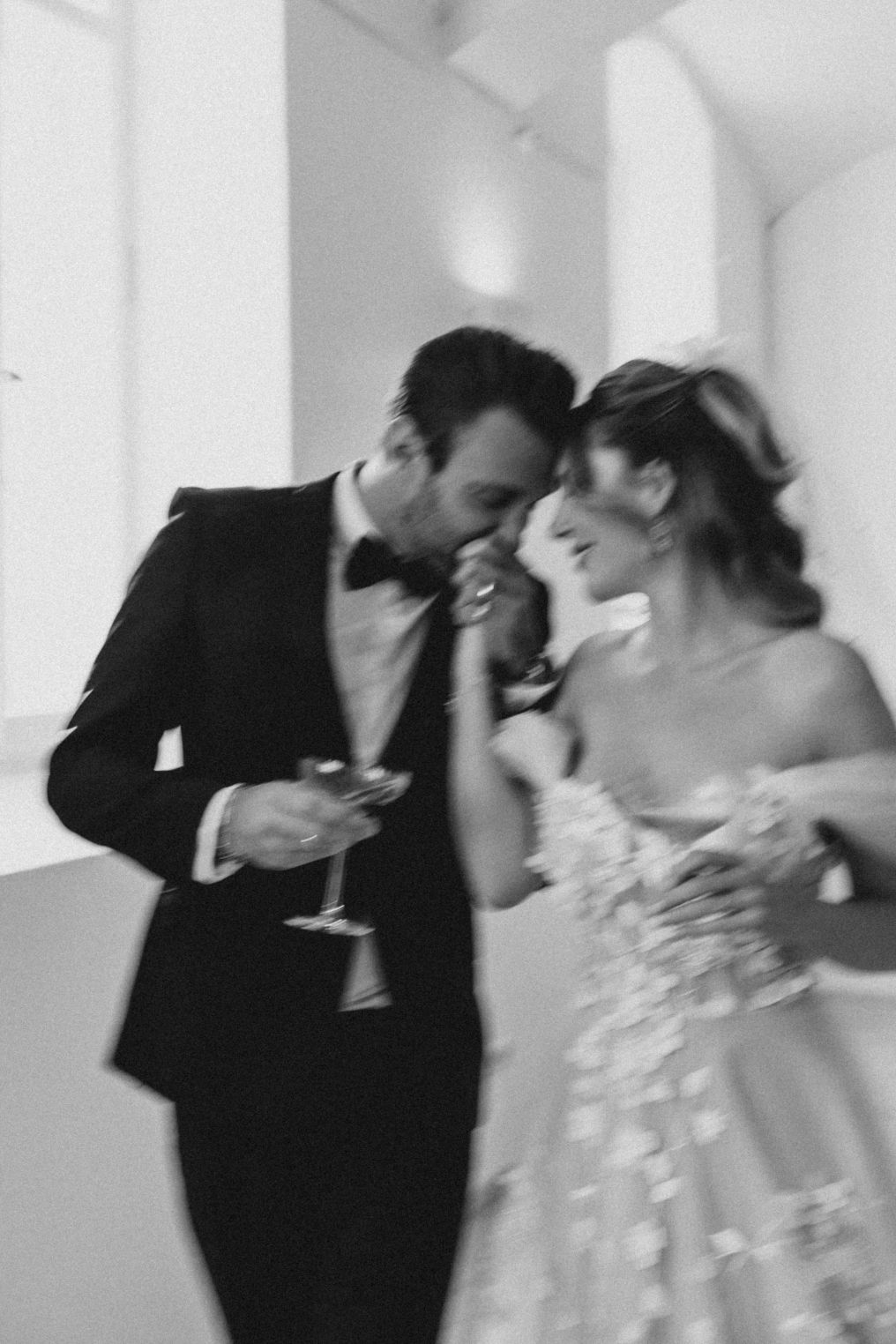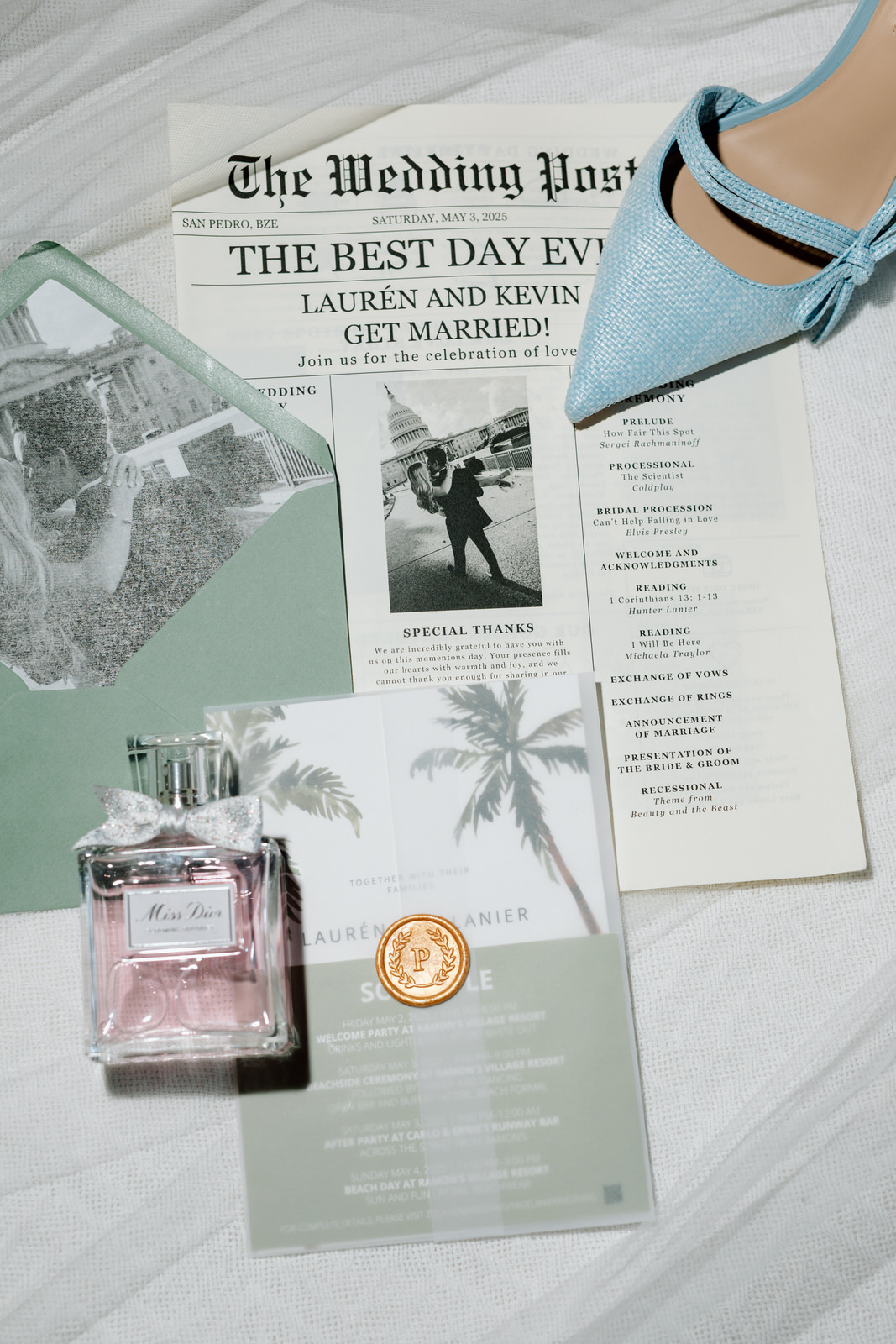Expert Photographers Reveal How to Pose Couples Effortlessly
- Author: Natali Grace Levine
- Reading time: 8 min 17 sec
- Publication date: 11/05/2025
- The Neuroscience of Camera Anxiety
- The Cocktail Party Effect
- The Ferrari Phenomenon: Unlocking Authentic Expression
- The Whisper Protocol: Creating Authentic Intimacy
- The Third Date Theory: Optimal Comfort Zones
- When Chaos Becomes Art
- Reading Micro-Expressions
- The Paradox of Candid Direction
- The Documentary Intersection: When to Step Back
- The Sensory Activation Technique
- The Confidence Multiplication Effect
- The Evolution of Couple Photography
Forget everything you think you know about posing couples. The most stunning engagement and wedding photos aren't born from perfect positioning or magazine-worthy stances—they emerge from something far more profound: the delicate psychology of human connection under pressure.
We've all seen them: those Instagram-perfect couple shots that somehow feel hollow, technically flawless but emotionally vacant. Then there are the images that stop you mid-scroll—raw, magnetic, alive with something you can't quite name. The difference isn't in the camera settings or the golden hour lighting. It's in what happens in the invisible space between photographer and subject, between direction and discovery.
Find Your Perfect Wedding Vendors
The Neuroscience of Camera Anxiety


Here's what most people don't realize: the moment a camera appears, our brains activate the same stress response as a job interview or first date. Heart rate spikes, muscles tense, and suddenly that natural intimacy couples share every day vanishes like morning mist.
Vincenzo Ingrassia has spent years studying this phenomenon: "My goal is to make them forget there's a camera in front of them so their truth, their emotion, and their love can shine through naturally." But how do you make someone forget about the very thing they're acutely aware of?
The answer lies in neuroplasticity—our brain's ability to rewire itself through experience. Nikita Burtsev has discovered that preparation is everything: "Before the wedding, I usually schedule a call with the couple to get to know them. This helps me personalize my communication and choose words that truly resonate with them."
This isn't just good customer service—it's strategic psychology. When couples feel understood as individuals rather than generic subjects, their defensive mechanisms relax. The camera transforms from an intimidating stranger's tool to a friend's instrument of storytelling.
The Cocktail Party Effect


Remember the last time you were at a party, deep in conversation with someone fascinating? You probably forgot about your appearance, your posture, even the room around you. That's the cocktail party effect, and master photographers weaponize it brilliantly.
Di Images reveals their approach: "I immediately begin asking about themselves. How do you know all of your groomsmen? Do your groomsmen know each other? I make it relevant to the wedding day." This isn't small talk—it's cognitive hijacking. By engaging the couple's storytelling brain, the photographer bypasses their self-consciousness entirely.
The Ferrari Phenomenon: Unlocking Authentic Expression


Here's where it gets interesting. Most photographers ask couples to "look natural" or "just be yourselves"—instructions that are psychologically impossible to follow. How do you consciously be unconscious?
Nikita Burtsev has cracked this code with what we might call the Ferrari Phenomenon: "What do most men love? Their beautiful bride… and expensive and fast cars! So I'll say something like, 'Imagine you're driving a Ferrari with your bride beside you.' Instantly, the groom's face lights up with the perfect expression."
This works because it triggers what psychologists call "embodied cognition"—the idea that our thoughts and emotions are deeply connected to our physical experiences. When someone imagines driving a Ferrari, their entire body language shifts: shoulders back, slight smile, eyes focused ahead. It's not acting; it's genuine emotional recall.
Holiak Photography employs similar neural tricks:
 I might tell the groom to gently smell his fiancée's hair near her temple—it sounds silly, but it brings out real smiles and genuine connection.
I might tell the groom to gently smell his fiancée's hair near her temple—it sounds silly, but it brings out real smiles and genuine connection.
The Whisper Protocol: Creating Authentic Intimacy


The most powerful couple photographs often capture moments that feel private. But how do you create genuine intimacy in front of a camera, lights, and sometimes a crowd of wedding guests?
Vincenzo Ingrassia shares:
 Once, during a sunset session, I asked the couple to quietly tell each other how they had felt throughout the day. Within seconds, the frame I captured was one of the most powerful from the entire wedding.
Once, during a sunset session, I asked the couple to quietly tell each other how they had felt throughout the day. Within seconds, the frame I captured was one of the most powerful from the entire wedding.
This technique works on multiple psychological levels. First, it creates a bubble of privacy within the public space. Second, it activates the couple's recent emotional memories. Third, it gives them something meaningful to focus on besides the camera. The result is images that feel stolen rather than staged.
Ivo Moreira from Momento Cativo shares a profound moment:
 I asked him to look at her and imagine the moment she would walk down the aisle. To our surprise, he suddenly started crying—it was a genuine, overwhelming emotion.
I asked him to look at her and imagine the moment she would walk down the aisle. To our surprise, he suddenly started crying—it was a genuine, overwhelming emotion.
This wasn't planned or directed; it was facilitated. The photographer created the conditions for authentic emotion to emerge.
The Third Date Theory: Optimal Comfort Zones


There's fascinating psychology behind Holiak Photography's "third date" instruction. Research shows that third dates occupy a unique psychological space—past the initial nervousness of first encounters but before the complete comfort of established relationships. It's the sweet spot of romantic tension and emerging intimacy.
"I always tell my couples to act like they're on a third date—not too formal, not overly shy, but already comfortable enough to hug, laugh, and enjoy each other." This specific temporal reference point activates muscle memory from their actual dating experience. "I encourage them to cuddle, move, and look at one another as if no one's photographing them—as if they're simply having fun together,"Holiak Photography explains. This isn't just about relaxation; it's about accessing a specific emotional state that translates beautifully to camera.
The genius is in the specificity. "Walk toward me like you've just had a couple of drinks in a bar and you're heading to your Uber to get home" creates a precise physical and emotional memory that couples can embody without thinking.

When Chaos Becomes Art


Sometimes the most powerful photographs happen when all pretense collapses. Daryna Huz witnessed this during a cake-cutting ceremony: "They suddenly started having fun and playfully feeding each other, and even throwing cake at each other's mouths. The genuine laughter and smiles on their faces were priceless."
This moment reveals something crucial: couples are most photogenic when they're least aware of being photographed. The cake fight worked because it activated their play instinct, bypassing every learned behavior about "proper" wedding conduct.
"What made this moment truly special was that they were completely in the moment, forgetting about the camera and just enjoying each other's company," Daryna Huz observes. This is the holy grail of couple photography—capturing people in the act of being themselves.
Reading Micro-Expressions


Elite photographers develop an almost supernatural ability to read body language. Nikita Burtsev explains:
 If I'm photographing a kiss, I make sure there's full-body connection — not just lips touching, but feet turned toward each other, hands engaged, bodies leaning in.
If I'm photographing a kiss, I make sure there's full-body connection — not just lips touching, but feet turned toward each other, hands engaged, bodies leaning in.
This isn't about perfection; it's about authenticity.
Real intimacy involves the entire body, not just the obvious contact points. When couples are genuinely connected, their bodies mirror each other unconsciously—what psychologists call "postural echo." Photographers who understand this can guide couples toward poses that feel natural because they mirror natural behavior.
Holiak Photography focuses on subtleties: "I also pay attention to the little things: soft fingers, relaxed shoulders, breathing on the exhale. These subtle cues help make every pose look effortless and alive." These aren't random details; they're the physical manifestations of emotional states.
The Paradox of Candid Direction


Here's where expert photographers reveal their deepest secret: many of the most "candid" photographs are actually highly directed. The key is making the direction feel so natural that couples forget they're being guided.
Daryna Huz masters this balance: "Instead of rigid poses, I encourage them to engage with each other – holding hands, whispering, laughing, or simply enjoying each other's company. This approach allows their genuine chemistry to shine through, resulting in authentic and effortless photos."
The most skilled photographers don't just capture moments; they excavate them. Vincenzo Ingrassia describes a technique that borders on emotional archaeology: "I asked the couple to close their eyes, hold hands, and think about the first time they said 'I love you.' I didn't say anything else. In the silence, something shifted."
This approach works because it accesses deep emotional memories rather than surface-level expressions. When couples reconnect with pivotal moments in their relationship, their bodies and faces reflect the original emotions, not performed versions of them.
Nikita Burtsev uses similar techniques: "I often ask the couple to imagine something that brings them joy — like being on vacation together. That small prompt usually brings out an authentic smile and helps them relax in front of the camera."
But sometimes the most powerful direction is no direction at all. Vincenzo Ingrassia describes a moment that illustrates this perfectly: "In the silence, something shifted—they slowly moved closer, touched their foreheads together, she smiled with teary eyes, and he whispered something I couldn't hear, but I saw everything."
This approach requires tremendous skill and intuition. The photographer must create the right conditions—emotional, physical, and temporal—then step back and allow authentic moments to emerge. It's the difference between forcing a moment and facilitating one.
"It worked because I created space, not just physically but emotionally, for something true to emerge," Vincenzo Ingrassia explains. "Technique matters, of course, but empathy makes the difference."
The Documentary Intersection: When to Step Back


Not every couple wants—or needs—heavy direction. Nikita Burtsev recognizes this: "Some couples aren't big fans of posed photos, and that's okay too. In those cases, I take a more documentary approach, respecting their space while still capturing the story."
This adaptive approach requires photographers to read not just body language but personality types. Some couples bloom under direction; others wilt. The best photographers develop an intuitive sense of when to guide and when to observe.
Di Images offers a perfect example:
 There are many couples who are not fans of public displays of affection. Up front, I let them know they can kiss whenever they want and touch whatever they want. If I ask you to kiss you are free to kiss any part of your person that you want, too.
There are many couples who are not fans of public displays of affection. Up front, I let them know they can kiss whenever they want and touch whatever they want. If I ask you to kiss you are free to kiss any part of your person that you want, too.
The Sensory Activation Technique


One of the most underutilized tools in couple photography is sensory activation. Holiak Photography incorporates music: "I bring a small portable speaker and play music during the shoot. It makes the atmosphere more relaxed and brings out their natural rhythm and connection."
Music doesn't just create ambiance; it activates muscle memory and emotional associations. Couples naturally move differently when they hear "their song" versus generic background music. The body remembers what the mind might forget.
Holiak Photography sometimes even incorporates "a pre-shoot cocktail" when appropriate, understanding that light alcohol can reduce inhibitions and increase natural expressiveness. It's not about getting couples drunk; it's about accessing their more relaxed, authentic selves.
The Confidence Multiplication Effect


Confidence is contagious, and skilled photographers understand how to amplify it. Nikita Burtsev reveals: "When posing the bride, I find that genuine compliments go a long way — they boost her confidence and help her open up emotionally."
But this isn't just about making people feel good. Confidence changes posture, expression, and energy in ways that dramatically improve photographs. A woman who feels beautiful carries herself differently than one who feels self-conscious.
Di Images demonstrates this through positive reinforcement: "I like to catch people doing the correct thing, naturally first. 'Stay just like that—that looks so good!' A phrase I use often." This technique builds confidence while subtly guiding behavior.

The Evolution of Couple Photography


The field of couple photography is evolving beyond traditional posing toward something more psychological and nuanced. Ivo Moreira from Momento Cativo represents this evolution: "Some of our favorite images come from guiding couples into bold, composed frames—what we like to call our 'epic shots.'"
This new approach combines the emotional authenticity of documentary photography with the visual impact of fashion photography. It's not just about capturing love; it's about creating art that happens to feature couples in love.
Daryna Huz embodies this philosophy: /p>
 I aim to see beyond the moment and capture something more — a certain elegance, a subtle nuance, or a hint of sophistication that elevates the photos to a new level.
I aim to see beyond the moment and capture something more — a certain elegance, a subtle nuance, or a hint of sophistication that elevates the photos to a new level.


As our world becomes increasingly digital and performative, the ability to capture genuine human connection becomes more precious. These photographers aren't just documenting relationships; they're preserving something essential about what it means to be human.
Vincenzo Ingrassia perhaps says it best: "For me, photography lives right there in that space where movement meets emotion, where light meets truth."
The future of couple photography lies not in better equipment or new techniques, but in deeper understanding of human psychology and connection. The camera is just the tool; the real art is in seeing—and revealing—the authentic love that already exists between two people brave enough to be vulnerable together.







